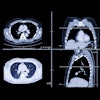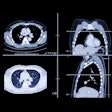It is often said that you only have one chance to make a good first impression. When searching for a new job, your resume is just that -- the first impression you make to your potential employer. If your resume isn’t impressive, you can kiss the chance of landing a telephone or a face-to-face interview goodbye!
So how do you make a good first impression with just your resume?
Make your resume an advertisement -- Know your target audience.
In the world of advertising, the first thing a company does is locate its target audience. Since your resume is your personal and professional advertisement, you must figure out exactly to whom you are trying to sell yourself and your experience. You should re-write your resume for each position you apply for… no job is exactly the same, and therefore you should not have just one resume! It may only take changing a few words, or it may take revamping your resume completely.
Once you’ve defined your target audience, you can then customize your resume to fit the job description by highlighting all the skills and experience required for the position you are trying to obtain. For example, if the job title is Project Manager and it is required that the ideal candidate have at least 5 years of experience in the healthcare environment, make sure to highlight and expand on your Project Management experience within a healthcare environment! Make it easy for the employer to see that you are a perfect fit for the job!
Don’t create a BORING resume. Sell your skills, achievements, and accomplishments.
Employers, especially hiring authorities, look at resumes every day. They already know the job duties that are involved with a specific job title, so only listing your duties and responsibilities is not impressive. Your resume should not read like a job description. Instead, include with the duties and responsibilities how your strengths and skills contributed to the position and the company. Give hard data. Did you develop or implement a new or upgraded system? Did you save the company money? If so, how much? Did you win awards or nominations while serving in this position? Or, what skills were you able to tone or develop while holding this particular job title (remember your target audience!).
It is often beneficial to highlight these accomplishments and skills in a section towards the beginning of your resume -- before your Work Experience. This section can be labeled “Achievement and Accomplishment,” “Professional Achievement,” “Skill Set,” or “Personal Profile,” or you can choose not to label the section at all.
Make your resume EASY to read -- this is not a book.
One of the biggest mistakes job seekers make is writing a resume that is hard to read. A hiring authority wants to glance at a resume and easily find target key words and requirements.
To make it easy for the hiring authority, it is vitally important to put bullet points in your resume! All information with the exception of headings, job titles, and dates should be bullet pointed. This includes all information pertaining to achievements, skills, job duties, etc. DO NOT write your resume in paragraph form. Many people try to write short paragraphs underneath each job title to summarize work experience. This is a mistake and may result in your resume being ignored or thrown away.
Also, it is very important that you write your resume in a Non-Functional or Chronological format. There are two types of resume formats: Functional and Chronological (aka Non-Functional). A chronological resume includes qualifications listed by past employer in reverse chronological order. Under each job title, the responsibilities, qualifications, skills, and/or accomplishments are listed. A chronological resume lets the hiring authority see clearly where and when each qualification you possess was obtained.
In a Functional resume, the main headlines you use are skills and strengths. For example, section headlines for someone wanting to do Technical Sales would be “Sales Experience,” “Technical Experience,” “Managerial Experience,” etc. Under each headline, the accomplishments and skills are summarized; however, there is no reference to which employer or specific job in which these skills were obtained. At the bottom of the resume is a brief section listing employment dates, job titles, and company names. A functional resume is a good idea if you are just breaking into a new field in which your past job titles and employers would carry no relevance. However, in most cases, a functional resume can be very confusing to read and is best to be avoided.
Avoid including personal information.
Unless you know the information applies specifically to the job description, DO NOT include your personal information such as a picture of yourself, your marital status, your age, your family details, your personal hobbies, etc. Even with very non-discriminatory workplaces, you don’t want to take the chance of stepping on anyone’s toes. A majority of the time, these details will not work in your favor.
Necessary sections to include in your resume:
- Contact information (name, address, email, phone number)
- Personal Profile, Attributes, or Professional Achievements
- Skill Set (very important for a technical resume!)
- Work Experience (in reverse chronological order)
- Educational Experience
- Certifications
- Misc. information (associations, memberships, volunteer work, etc.)
Share your resume -- Get another perspective.
When you complete your new or updated resume, get another person’s perspective. Share your resume with a coworker, family member, or friend. They may have no knowledge of your particular industry, but they will be able to easily spot typos, misspellings, and the parts that “just don’t make sense.” Is the alignment a bit off? Did you forget to include some of your educational experience? Is your resume chronologically out of order? After staring at the same resume for a long period of time, your mind may automatically “fix” the mistakes you made. It is very important to have someone, other than yourself, proofread your final copy.
Another great way to double-check for mistakes is to proofread your resume after you print it out. On your computer screen things may seem aligned, but are completely different once printed out.
Additional information for hiring authorities and candidates can be found at: www.SkinnerandAssociates.com or by contacting [email protected].















